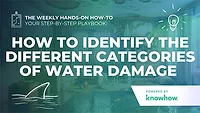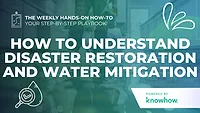Weekly Hands-on How-To powered by KnowHow
How to Identify the Classes of Water Damage
This Week’s Hands-On Segment Focuses on the 4 Classes of Water Damage
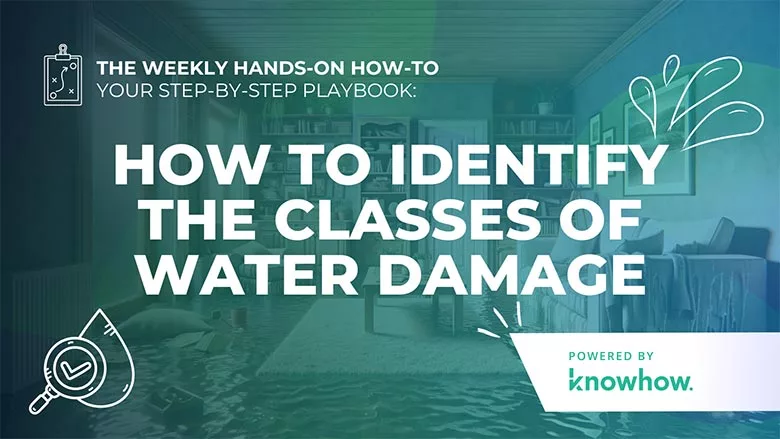
All images courtesy of KnowHow
In the world of water restoration, knowing the difference between Class 1 and Class 4 water damage isn't just important—it's essential. Without this knowledge, it would be like not being able to distinguish between different chess pieces but thinking you'll win the game anyway.
Walking into a water-damaged property without a clear plan is a recipe for an even bigger disaster. Without understanding the severity of the damage, restoration efforts can be wasted, prolonging the process and risking further damage.
In this Weekly How-to series, powered by KnowHow, we'll explore each class of water damage and give practical insights and examples to empower you to tackle any restoration challenge with confidence and efficiency.
Note: This Weekly Hands-On How-To was based on this template in KnowHow’s template library.
Water Damage Categories Vs. Water Damage Classes
As we explored in How to Identify the Different Categories of Water Damage, water damage categories identify the origin or source of water contamination. They categorize water based on its level of contamination and potential hazards, helping restoration professionals assess the risks associated with the water present in a damaged property.
On the other hand, and what we are exploring today, water damage classes provide insight into the severity and extent of the damage caused by water intrusion. These classes categorize the level of water absorption and the rate of evaporation, enabling restoration professionals to gauge the scope of the damage and plan appropriate mitigation strategies.
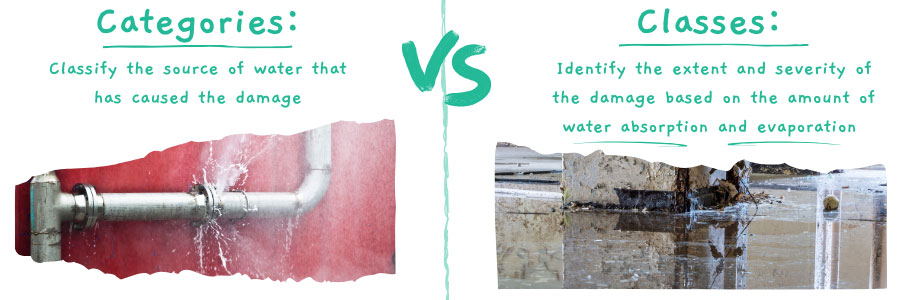
Now, with the differences between water damage categories and classes clearly defined, let's dive into the intricacies of water damage classes to understand the nuances of each scenario.
Class 1 Water Damage
Class 1 water damage involves the least amount of water absorption, with less than 5% of area surfaces like floors, walls, and ceilings being affected by wet porous materials. Since the presence of water is minimal, evaporation occurs slowly and results in the slowest rate of evaporation.
This classification typically includes materials that do not absorb much water, such as concrete, which may be lightly affected.
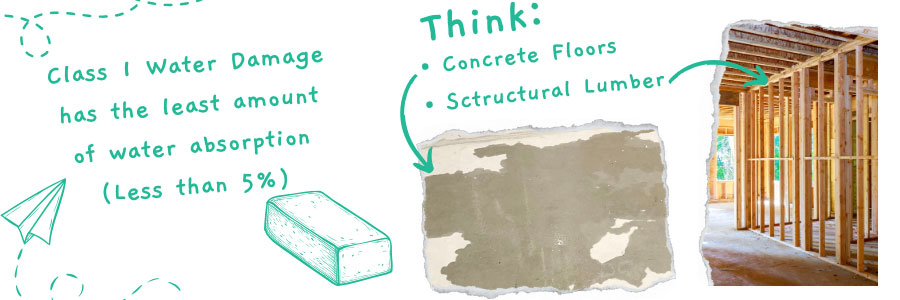
Examples of Class 1 water damage scenarios include:
- Concrete basement floors with minimal water absorption.
- Materials with low porosity that exhibit minimal moisture absorption, including plywood, structural lumber, or concrete.
- Instances where wet carpet or padding has already been removed.
Class 2 Water Damage
Class 2 water damage indicates a higher rate of evaporation compared to Class 1, as more water is present on the scene. In this category, more than 5% of area surfaces, including porous materials, are affected. In some cases, up to 40% of area surfaces experiencing water exposure are impacted. However, low-evaporation materials within this range have only absorbed minimal moisture.
Common examples of Class 2 water damage scenarios include:
- Wet carpeting, cushioning, and water-wicking up gypsum wallboard.
- Structures affected by Category 2 damage, where the underlay has been removed, but other wet structural materials remain.
- Instances where carpet and underlay are undergoing in-place drying, but no wicking up the walls has occurred.
Class 3 Water Damage
Class 3 water damage involves the highest volume of water compared to any other class, resulting in the fastest evaporation rate because of the volume of water. In this category, more than 40% of area surfaces are wet porous materials.
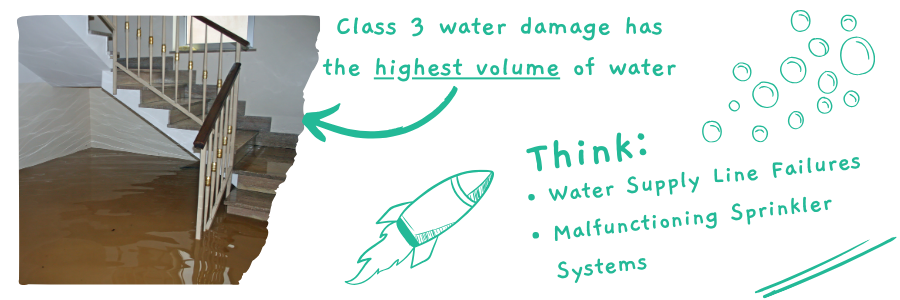
Examples of Class 3 water damage scenarios include:
- Water supply failures on upper floors saturating entire areas below with significant water volumes.
- Malfunctioning overhead water supply pipes leading to extensive water exposure.
- Instances where carpeting, underlay, walls, structures, and insulation are all affected by water saturation.
Class 4 Water Damage
Class 4 water damage encompasses specialty drying situations where wet materials may require an extended period to dry. Water has deeply saturated these areas and is held or trapped within them, resulting in slow evaporation. Materials such as hardwood, plaster, and brick exhibit significant absorption and necessitate drying using desiccant and/or special dehumidification methods with larger vapor pressure differentials.
Examples of Class 4 water damage scenarios include:
- Plaster and lath walls deeply saturated with water.
- Structures featuring hardwood floors or very old construction with multiple layers affected by water.
- Water loss incidents occurring in locations like gymnasiums or on concrete or dirt floors.
As restoration professionals navigate the complexities of each class, having the right tools and educational resources at their disposal can make all the difference.
At KnowHow, we provide the essential knowledge, support, and on-the-job guidance needed for restoration teams to feel confident and competent to tackle any challenge thrown their way. From onboarding new staff to providing quick, accurate solutions in the field, KnowHow empowers restoration professionals to excel at every step of the process.
With KnowHow by your side, you can confidently tackle any water damage restoration challenge. To learn more about how KnowHow can elevate your restoration efforts, visit us at tryknowhow.com.
Looking for a reprint of this article?
From high-res PDFs to custom plaques, order your copy today!



